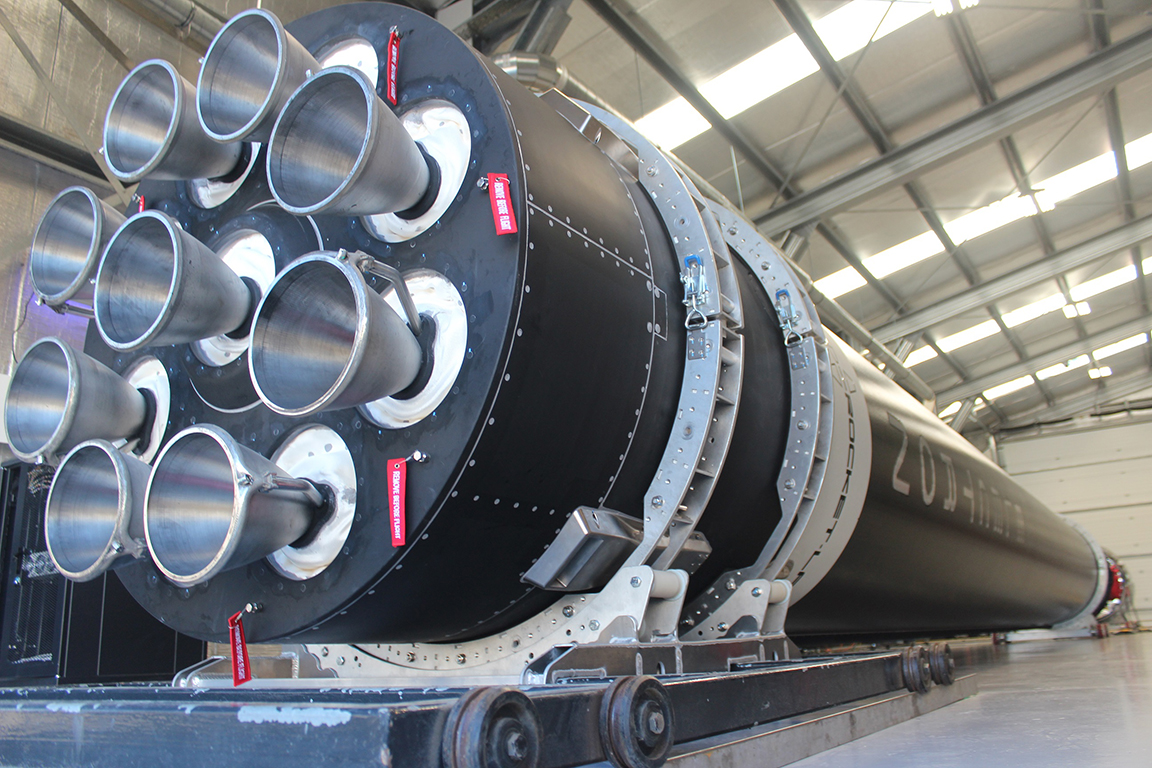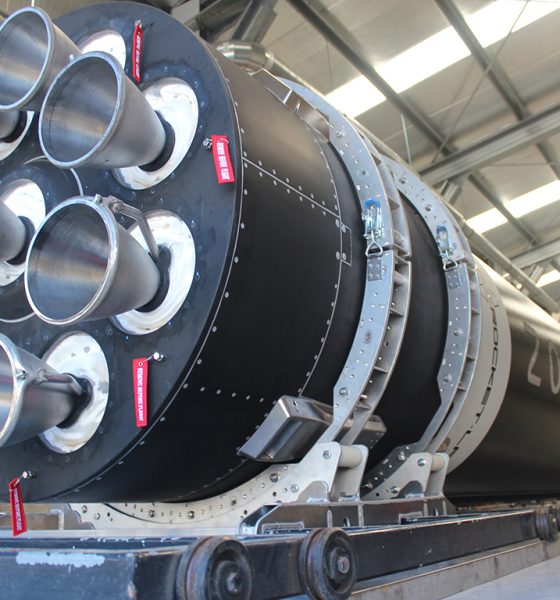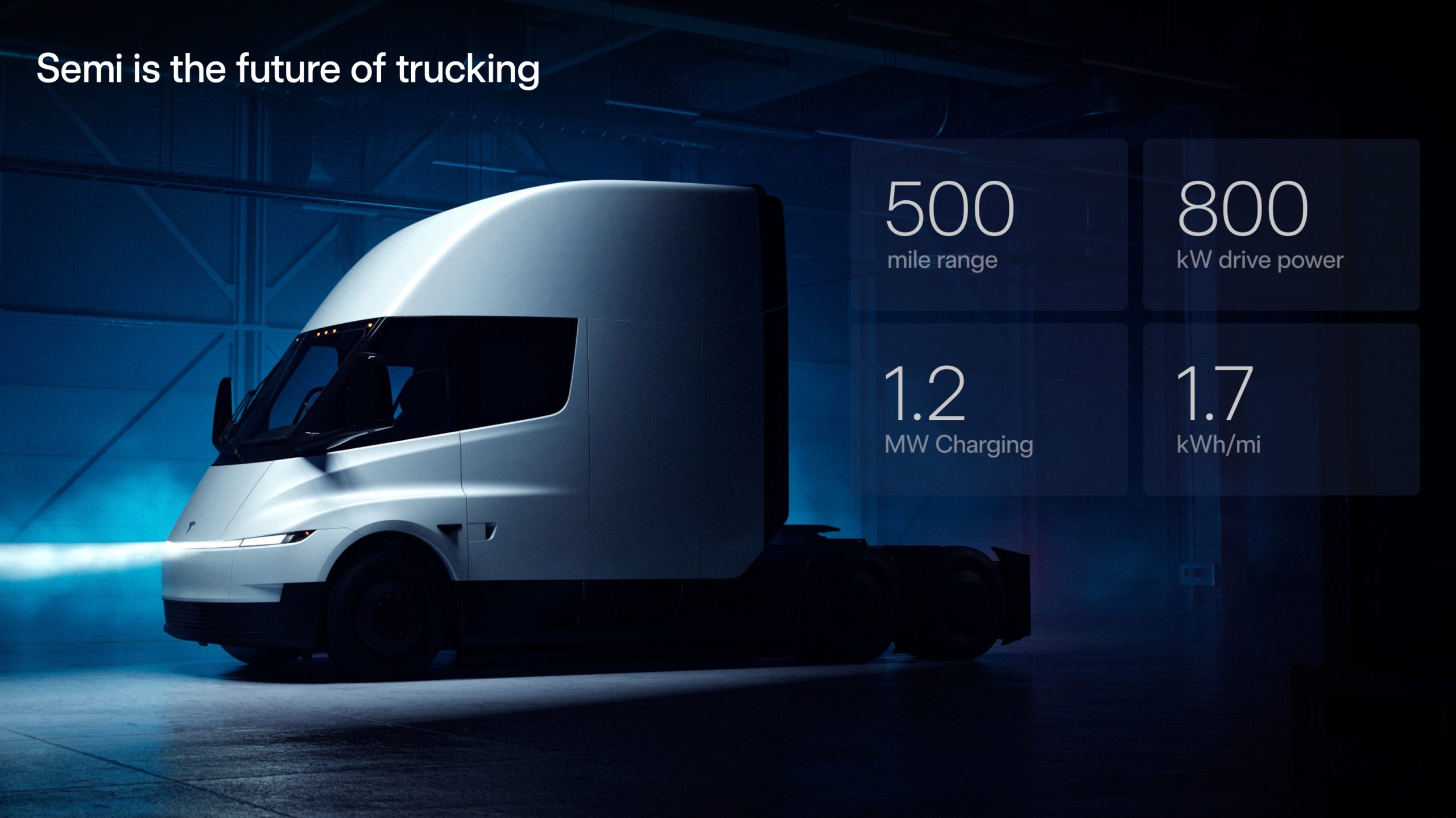

News
Rocket Lab channels SpaceX-like rapid launch capability in July 4 Electron mission
The prominent launcher of dedicated small satellite launches, Rocket Lab, looks to achieve SpaceX-like rapid launch capability of its Electron rocket. The company is targeting its shortest turn around time between missions from the same launch pad. Just three weeks ago, Rocket Lab returned to operational launch status following the easement of Covid-19 restrictions at the company’s Launch Complex 1 in Mahia, New Zealand. The Electron rocket completed its twelfth mission nicknamed “Don’t Stop Me Now” which supported a rideshare payload of five smallsats to orbit. Now, Rocket Lab is ready for its third mission of 2020 – the second in just three weeks – with Electron’s thirteenth mission “Pics Or It Didn’t Happen.”
The launch window for #PicsOrItDidntHappen opens on 3 July UTC. Lift-off will take place from Rocket Lab Launch Complex 1 Pad A on the Mahia Peninsula. pic.twitter.com/01sDCXVj03
— Rocket Lab (@RocketLab) June 15, 2020
Rideshare mission of space cameras
The “Pics Or It Didn’t Happen” mission features a rideshare manifest consisting of seven small satellite payloads for customers Planet, In-Space Missions, and rideshare and mission manager Spaceflight Inc.’s customer Canon Electronics. The majority of payloads are Earth-imaging satellites inspiring the “Pics Or It Didn’t Happen” mission nickname. The primary payload, Canon Electronics Inc.’s CE-SAT-IB microsatellite, will demonstrate the company’s high definition and wide-angle Earth-imaging capabilities and will serve as a testbed for future opportunities of mass production. Also aboard Electron is five of Planet’s latest generation SuperDove (Flock4e) Earth-observation satellites equipped with new sensors to produce higher quality images of Earth’s landmass on a near-daily basis. The UK enterprise In Space Missions provides the final payload with its maiden Faraday-1 6U CubeSat. According to In Space Missions, Faraday-1 is “the first in a series of satellites that will provide a turnkey service for commercial customers and research organizations wanting to access to space at a competitive and affordable cost.” Currently, In Space Missions has four more satellites under contract with the Faraday service.
Rocket Lab’s carbon composite Electron booster propelled by nine 3D-printed Rutherford sea-level engines capable of 36,000lbf (162kN) of thrust will send all payloads to a 500km sun-synchronous low Earth orbit at an inclination of 97.5 degrees.
It's almost time to go to space! Today's mission will see seven small sats launched to a 500 km circular orbit for @SpaceflightInc customer @Canon, as well as small sat operators @planetlabs and @Heads_InSpace. pic.twitter.com/mMKENVBeLa
— Rocket Lab (@RocketLab) July 4, 2020
Rapid launch capability within reach
According to Rocket Lab, a new Electron booster is produced in-house approximately every eighteen days at its production facility in Auckland, New Zeland. While Electron currently only launches from Launch Complex 1 on New Zeland’s Mahia Peninsula, Rocket Lab looks to further open small satellite access to orbit and expand its launching capabilities with two more operational launch complexes targeted to begin service later this year. The Mahia Peninsula location has recently undergone expansion, adding the neighboring Launch Complex 1B while a third launch location, Launch Complex 2, has been opened at the Mid-Atlantic Regional Spaceport in Wallops Island, Virginia.
Lots of launch pads, we got ‘em. Electron is on the pad at LC-1A this week with a front row view of construction progress on LC-1B. pic.twitter.com/ijZAVRc6yV
— Rocket Lab (@RocketLab) July 1, 2020
Rocket Lab Founder and CEO, Peter Beck, states that multiple launch locations “enables our small sat operators to do more, spend less, and get to orbit faster” and that “Rocket Lab has eliminated the small sat waiting room for orbit. We’ve focused heavily on shoring up our rapid launch capability in recent years and we’re proud to be putting that into practice for the small sat community with launches just days apart.”
The rocket backlog. pic.twitter.com/AhHlbNvEmq
— Peter Beck (@Peter_J_Beck) May 15, 2020
With an expansive backlog of Electron boosters, Rutherford engines, and the capability to soon launch missions back-to-back from neighboring launchpads Rocket Lab aims to break into the market of rapid launch capability joining the likes of SpaceX and its Falcon 9 rocket which has launched 91 times (89 times successfully) since 2010. The company also looks to break into the booster recovery market also pioneered by SpaceX.
Earlier this year, Rocket Lab completed a successful mid-air recovery demonstration of a parachute equipped test article with a helicopter and a specially designed grappling hook. Beck recently revealed on Twitter that Rocket Lab is targeting the seventeenth flight of the Electron to debut fully operational recovery efforts of the first stage booster to occur at some point before year’s end.
The “Pics Or It Didn’t Happen” mission previously scheduled for July 3rd, moved to July 5th, then pushed up to July 4th is now targeting liftoff NET 21:19 UTC/5:19 pm EDT from LC-1 in New Zealand taking advantage of more favorable launch weather conditions. Rocket Lab has stated on Twitter, however, that there is a “relatively high chance” of the launch attempt scrubbing to a later date as the possibility of high ground winds still persists. Should they be needed, backup launch opportunities extend through July 16th.
The “Pics Or It Didn’t Happen” Electron and payload are currently vertical at LC-1 ahead of the launch attempt. A Livestream of the effort will be made available approximately fifteen minutes ahead of liftoff posted to the company’s social media accounts and available on the company’s website: www.rocketlabusa.com/live-stream.

News
Tesla Cybercab tests are going on overdrive with production-ready units
Tesla is ramping its real-world tests of the Cybercab, with multiple sightings of the vehicle being reported across social media this week.

Tesla is ramping its real-world tests of the Cybercab, with multiple sightings of the autonomous two-seater being reported across social media this week. Based on videos of the vehicle that have been shared online, it appears that Cybercab tests are underway across multiple states.
Recent Cybercab sightings
Reports of Cybercab tests have ramped this week, with a vehicle that looked like a production-ready prototype being spotted at Apple’s Visitor Center in California. The vehicle in this sighting was interesting as it was equipped with a steering wheel. The vehicle also featured some changes to the design of its brake lights.
The Cybercab was also filmed testing at the Fremont factory’s test track, which also seemed to involve a vehicle that looked production-ready. This also seemed to be the case for a Cybercab that was spotted in Austin, Texas, which happened to be undergoing real-world tests. Overall, these sightings suggest that Cybercab testing is fully underway, and the vehicle is really moving towards production.
Production design all but finalized?
Recently, a near-production-ready Cybercab was showcased at Tesla’s Santana Row showroom in San Jose. The vehicle was equipped with frameless windows, dual windshield wipers, powered butterfly door struts, an extended front splitter, an updated lightbar, new wheel covers, and a license plate bracket. Interior updates include redesigned dash/door panels, refined seats with center cupholders, updated carpet, and what appeared to be improved legroom.
There seems to be a pretty good chance that the Cybercab’s design has been all but finalized, at least considering Elon Musk’s comments at the 2025 Annual Shareholder Meeting. During the event, Musk confirmed that the vehicle will enter production around April 2026, and its production targets will be quite ambitious.
News
Tesla gets a win in Sweden as union withdraws potentially “illegal” blockade
As per recent reports, the Vision union’s planned anti-Tesla action might have been illegal.

Swedish union Vision has withdrawn its sympathy blockade against Tesla’s planned service center and showroom in Kalmar. As per recent reports, the Vision union’s planned anti-Tesla action might have been illegal.
Vision’s decision to pull the blockade
Vision announced the blockade in early December, stating that it was targeting the administrative handling of Tesla’s facility permits in Kalmar municipality. The sympathy measure was expected to start Monday, but was formally withdrawn via documents sent to the Mediation Institute and Kalmar Municipality last week.
As noted in a Daggers Arbete report, plans for the strike were ultimately pulled after employer group SKR highlighted potential illegality under the Public Employment Act. Vision stressed its continued backing for the Swedish labor model, though Deputy negotiation manager Oskar Pettersson explained that the Vision union and IF Metall made the decision to cancel the planned strike together.
“We will not continue to challenge the regulations,” Petterson said. “The objection was of a technical nature. We made the assessment together with IF Metall that we were not in a position to challenge the legal assessment of whether we could take this particular action against Tesla. Therefore, we chose to revoke the notice itself.”
The SKR’s warning
Petterson also stated that SKR’s technical objection to the Vision union’s planned anti-Tesla strike framed the protest as an unauthorized act. “It was a legal assessment of the situation. Both for us and for IF Metall, it is important to be clear that we stand for the Swedish model. But we should not continue to challenge the regulations and risk getting judgments that lead nowhere in the application of the regulations,” he said.
Vision ultimately canceled its planned blockade against Tesla on December 9. With Vision’s withdrawal, few obstacles remain for Tesla’s long-planned Kalmar site. A foreign electrical firm completed work this fall, and Tesla’s Careers page currently lists a full-time service manager position based there, signaling an imminent opening.
News
Tesla Semi program Director teases major improvements

Tesla Semi Program Director Dan Priestly teased the major improvements to the all-electric Class 8 truck on Thursday night, following the company’s decision to overhaul the design earlier this year.
Priestley said he drove the Semi on Thursday, and the improvements appear to be welcomed by one of the minds behind the project. “Our customers are going to love it,” he concluded.
Just drove the redesigned Semi. Our customers are going to love it. https://t.co/KZ88sf1CDL
— Dan Priestley (@danWpriestley) December 19, 2025
The small detail does not seem like much, but it is coming from someone who has been involved in the development of the truck from A to Z. Priestley has been involved in the Semi program since November 2015 and has slowly worked his way through the ranks, and currently stands as the Director of the program.
Tesla Semi undergoes major redesign as dedicated factory preps for deliveries
Tesla made some major changes to the Semi design as it announced at the 2025 Annual Shareholder Meeting that it changed the look and design to welcome improvements in efficiency.
Initially, Tesla adopted the blade-like light bar for the Semi, similar to the one that is present on the Model Y Premium and the Cybertruck.
Additionally, there are some slight aesthetic changes to help with efficiency, including a redesigned bumper with improved aero channels, a smaller wraparound windshield, and a smoother roofline for better aero performance.
All of these changes came as the company’s Semi Factory, which is located on Gigafactory Nevada’s property, was finishing up construction in preparation for initial production phases, as Tesla is planning to ramp up manufacturing next year. CEO Elon Musk has said the Semi has attracted “ridiculous demand.”
The Semi has already gathered many large companies that have signed up to buy units, including Frito-Lay and PepsiCo., which have been helping Tesla test the vehicle in a pilot program to test range, efficiency, and other important metrics that will be a major selling point.
Tesla will be the Semi’s first user, though, and the truck will help solve some of the company’s logistics needs in the coming years.








